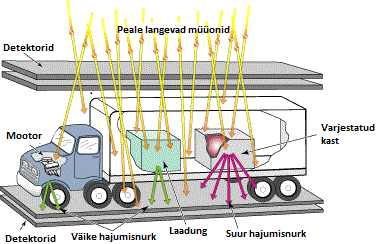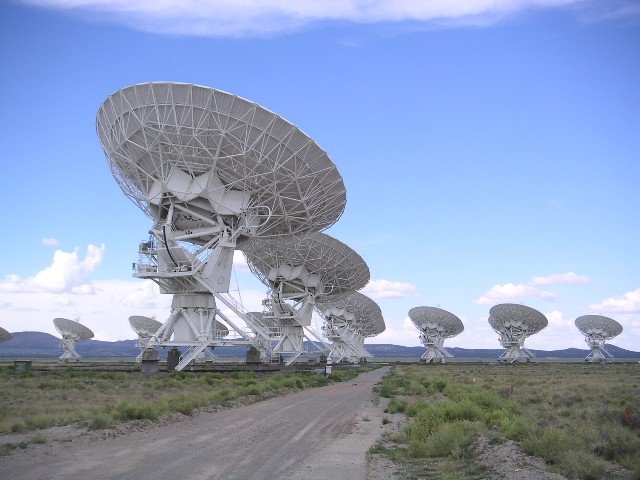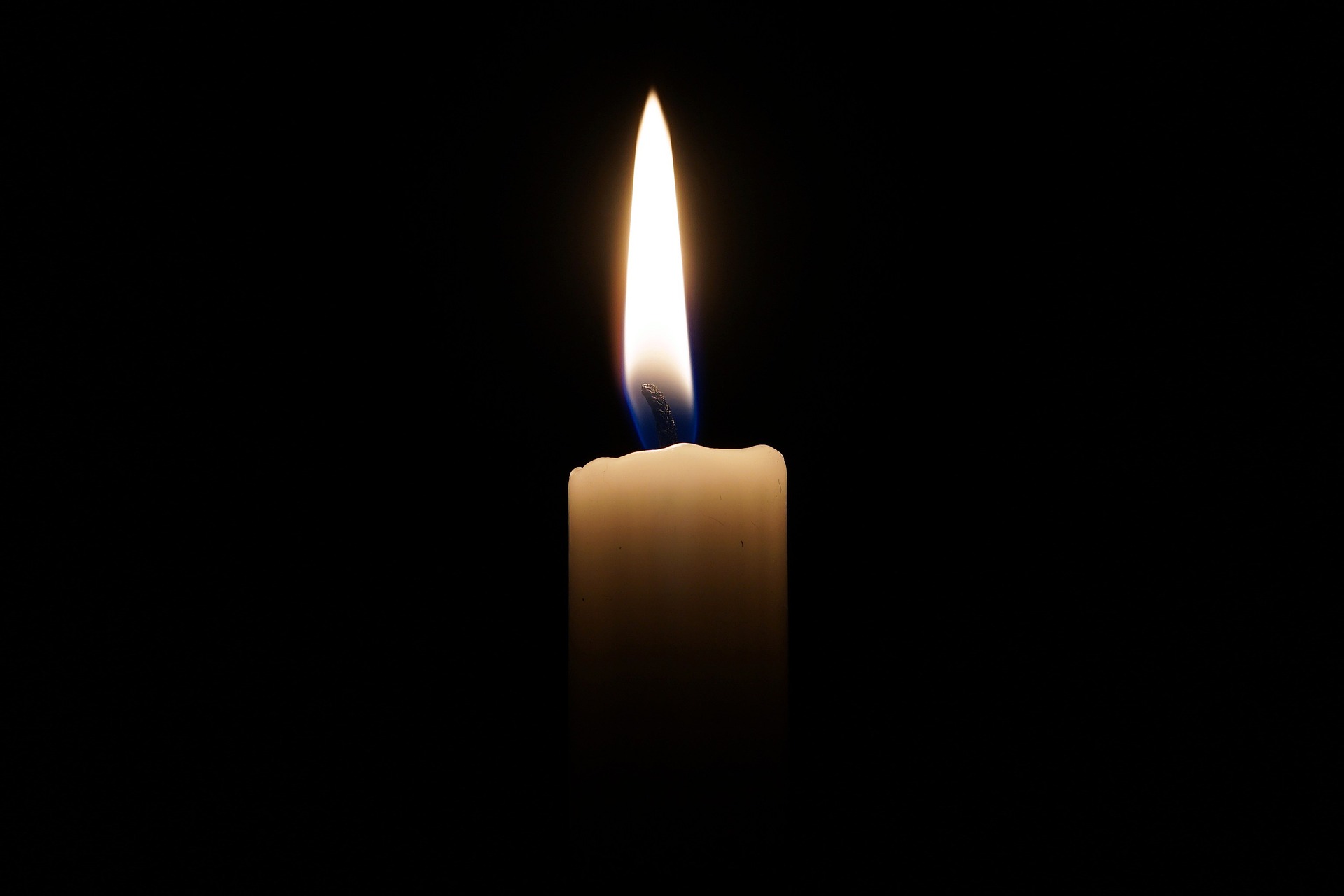Da Vinci Times #11.1
The most useful particles
After the great success of last year in revealing a hidden chamber inside the Great Pyramid of Cheops, now the detectors of muons are ready to be used in the most disparate fields. From archeology to national security, from volcanoes and to art. This, thanks to particles that are formed in the upper atmosphere and reach the ground.

Imagine CC0 Creative Commons - Source
Muons are formed when a particle from space (a cosmic ray) impacts against the molecules in the earth's atmosphere. They are electrically charged particles, which can cross large volumes of solid material. Obviously, the thicker the material is the more muons are blocked during the passage inside it. This feature, combined with the fact that the muon detectors have very small dimensions, makes these particles useful for various purposes. Revealing a magma duct inside a volcano, hidden cracks in an ancient monument, or radioactive contraband material, for example, thanks to detectors placed at the borders of the various countries.
City invertebrates
An article published in Nature show that, albeit with some exceptions, most of the invertebrates living in our cities show a lower average size compared to those living in more natural areas.

Imagine CC0 Creative Commons - Source
It is not clear what is the reason for this discrepancy in dimensions within the same species, but two different reasons have been hypothesized that do not necessarily exclude one another. The first, with a biological mean, suggests differences in metabolism linked to the average higher temperatures that are found in the cities: high temperatures, in fact, accelerate the metabolism, changing the patterns of development of the animals. The second, with ethological mean, speculates that in an urban environment is not necessary to reach a big size, which instead could be useful or necessary in nature to have an effective dispersion.
Engineers at work
In the Australian desert has been completed the installation of the first 256 antennas of the SKA project, which one day will be the world's largest radio telescope, designed to reveal the low-frequency signals that come from the depths of the cosmos.

Imagine CC0 Creative Commons - Source
There will be (in total) 130’000 antennas. They will be installed in the coming years in the Australian and African desert. SKA (Square Kilometer Array) will be a very powerful radio telescope, which will unveil secrets of the cosmos that are not imaginable today. These antennas are a first prototype, which required years of experimentation and hard work. SKA is an international project, which involves many different countries. Now the researchers are calibrating the first antennas, waiting for the next 130,000.
Post of the day

Imagine CC0 Creative Commons - Source
@sakura1012, in a very intimate post, gives us thoughts and reflections on death, and on phases that each of us is "forced" to face when, in a more or less unexpected way, it finds its own way.

Immagine CC0 Creative Commons, si ringrazia @mrazura per il logo ITASTEM.
CLICK HERE AND VOTE FOR DAVINCI.WITNESS
Keep in mind that for organizational reasons it’s necessary to use “steemstem” and “davinci-times” tags to be voted.
@aboutcoolscience - @spaghettiscience - @rscalabrini
Le particelle più utili
Dopo il grande successo dell’anno scorso nel rivelare una camera nascosta all’interno della Grande Piramide di Cheope, ora i detector di muoni si apprestano per essere utilizzati nei campi più disparati. Dall’archeologia alla sicurezza nazionale, passando per i vulcani e le opere d’arte. Il tutto grazie a particelle che si formano nell’alta atmosfera e giungono fino a terra.

Imagine CC0 Creative Commons - Source
I muoni si formano quando una particella carica proveniente dallo spazio impatta contro le molecole presenti nell’atmosfera terrestre. Sono particelle elettricamente cariche, che possono attraversare grandi volumi di materiale solido. Naturalmente, più il materiale è denso (o spesso), più muoni vengono bloccati durante il passaggio al suo interno. Questa caratteristica, unita al fatto che i rivelatori di muoni hanno dimensioni molto ridotte, fa si che queste particelle possano essere utilizzate per vari scopi. Rivelare un condotto magmatico all’interno di un vulcano, le crepe nascoste in un monumento antico, oppure materiale radioattivo di contrabbando, per esempio grazie a detector posti alle frontiere dei vari paesi.
Gli invertebrati di città
Un articolo pubblicato su Nature sembra dimostrare che, pur con qualche eccezione, la maggior parte degli invertebrati residenti nelle nostre città mostrano dimensioni medie inferiori rispetto a quelli residenti in zone più naturali.

Imagine CC0 Creative Commons - Source
Non è chiaro quale sia il motivo di questa discrepanza nelle dimensioni all’interno della stessa specie, ma sono state ipotizzati due diversi motivi, non necessariamente esclusive. La prima, di tipo biologico, suggerisce differenze nel metabolismo legate alle temperature mediamente maggiori che si riscontrano nelle città: le alte temperature accelerano infatti il metabolismo, cambiando i pattern di sviluppo degli animali. La seconda, di tipo etologico, si base invece sulla non necessità di raggiungere in un ambiente cittadino delle grandi dimensioni, che potrebbero invece essere utili e necessarie in natura per una dispersione efficace.
Ingegneri al lavoro
Nel deserto australiano è terminata l’installazione delle prime 256 antenne del progetto SKA, che diventerà un giorno il più grande radiotelescopio del mondo, pensato per rivelare i segnali a bassa frequenza che giungono dalle profondità del cosmo.

Imagine CC0 Creative Commons - Source
In totale le antenne saranno 130’000, e verranno installate nei prossimi anni nel deserto australiano ed africano. SKA (Square Kilometer Array) sarà un radiotelescopio potentissimo, che svelerà segreti del cosmo oggi impensabili. Queste antenne sono un primo prototipo, che ha richiesto anni di sperimentazioni e di fatiche. SKA è un progetto internazionale, che vede coinvolti moltissimi paesi diversi. Ora i ricercatori stanno calibrando le prime antenne, in attesa delle prossime 130’000.
Post del giorno

Imagine CC0 Creative Commons - Source
@sakura1012, in un post molto intimo, ci regala pensieri e riflessioni sulla morte e sulle fasi che ciascuno di noi è “costretto” ad affrontare quando, in modo più o meno inaspettato, la trova sulla propria strada.

Immagine CC0 Creative Commons, si ringrazia @mrazura per il logo ITASTEM.
CLICK HERE AND VOTE FOR DAVINCI.WITNESS
Si ricorda che per motivi organizzativi è necessario utilizzare le tag “steemstem” e “davinci-times” per essere votati.
@aboutcoolscience - @spaghettiscience - @rscalabrini
I muoni! Avevo fatto un post 😀
Bravi, ottimo lavoro come sempre!
I agree that the muon thing was a very nice byproduct of particle physics given for free to the society :)
Thanks @davinci.times for featuring my article.